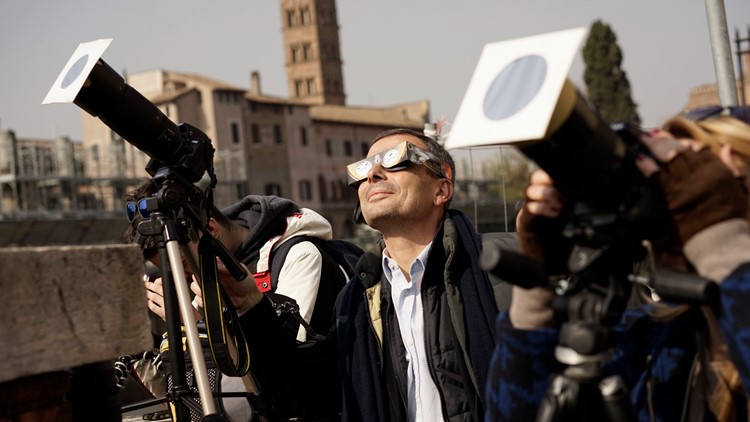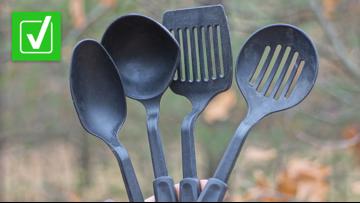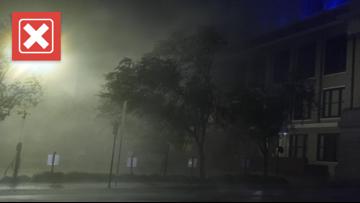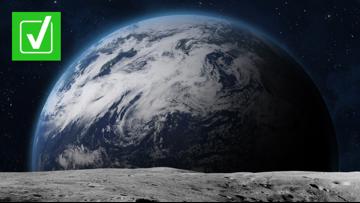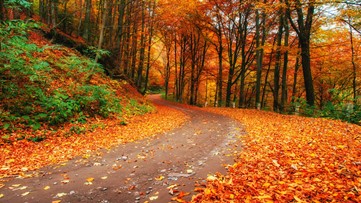A total solar eclipse will briefly darken the skies over parts of North America on April 8, 2024.
While watching these rare events is exciting, looking directly into the sun can damage your eyes. We VERIFIED four ways to protect your eyes while watching the total eclipse.
After our story was shared on social media, VERIFY reader Sandra asked us on Facebook if it’s safe to take a photo of the eclipse with a digital or smartphone camera.
THE QUESTION
Is it safe to photograph the total solar eclipse?
THE SOURCES
- NASA
- American Astronomical Society
- American Academy of Ophthalmology
- Prevent Blindness
- Nikon, photographic equipment manufacturer
- Ralph Chou, OD, a professor emeritus of optometry and vision science at the University of Waterloo
THE ANSWER
Yes, it’s safe to photograph the total solar eclipse as long as you attach a special-purpose solar filter over the camera lens.
WHAT WE FOUND
All of our sources say it is safe to take photos of the total solar eclipse with any type of camera, including smartphone cameras, as long as you attach a special-purpose solar filter over the lens before and after totality.
Looking directly at the sun during an eclipse is unsafe, except when the sun is completely covered. The same rules apply to camera lenses when taking photos.
If your camera lens is equipped with a proper solar filter, you won’t need to wear eclipse glasses or use a handheld solar viewer while you’re looking at the eclipse through the camera. That’s because these solar filters do the same job as eclipse glasses to protect your eyes, according to NASA.
Camera lenses need solar filters for two reasons: to protect them from intense sunlight and to ensure you don’t accidentally look at the sun through an unfiltered instrument, according to the American Astronomical Society.
“When shooting still images or video of a solar eclipse, one rule is paramount: special-purpose solar filters must always remain on cameras during the partial phases. Only during totality is it safe to remove them,” the American Astronomical Society says.
Totality is the phase of a total solar eclipse when the sun is completely blocked by the moon. The total phase only lasts about two to four minutes, depending on your location in the viewing path.
On April 8, 2024, the total phase of the eclipse will only be visible along a narrow track stretching from Texas to Maine, NASA says. A partial eclipse will be visible throughout all 48 contiguous U.S. states. Click here to see if you’ll be in the path of totality on April 8.
“Most of the time during a solar eclipse you’ll be watching the partial phases, during which filters are always required,” the American Astronomical Society says. “Filters should fit snugly over the front of all camera lenses.”
During the total phase, people won’t be able to get a photo of the eclipse unless they remove the solar filters, according to the American Astronomical Society and Nikon. This is because the sun’s corona, the outermost part of the sun’s atmosphere which is usually hidden by the sun’s bright surface, is a million times fainter than the sun’s visible disk, or photosphere.
Due to the corona’s faintness, solar filters will make it near impossible to see. Just remember to put the filter back on at the end of totality, since the entire phase only lasts about two to four minutes.
Taking photos of the eclipse with a camera can be a bit challenging for novice photographers. In addition to using a solar filter, our sources recommend these techniques to get a good photo using any camera:
- Use a tripod to keep your camera stable.
- Use a remote trigger or set the camera on a timer. With a remote, you can adjust settings and shoot the photo while keeping your camera stable.
- Practice. Take photos just after sunset during twilight to get an idea of what the light levels will be like during totality in the weeks and days leading up to the eclipse.
- Shoot photos of the moon to learn how to manually adjust the focus on your camera. If you’re practicing with a smartphone, tap the screen and hold your finger on the image of the moon to lock the focus. Then slide your finger up or down to darken or lighten the exposure.
- Learn the manual settings of your camera for better results than with automated exposure settings. Most cameras, and even many smartphones, have adjustable exposures, which can help you darken or lighten your image during the tricky eclipse lighting.
- A telephoto lens system is a must-have. For close-up images of the eclipsed sun, you’ll need a DSLR or DSLM interchangeable lens camera with a telephoto lens or a point-and-shoot camera with a high-power zoom lens. There are also zoom lenses for smartphones designed solely to provide magnification without resorting to digital zoom.
- Shoot in raw format (not jpeg) for better image quality.
- Use the bracketing feature of your camera to take photos at multiple exposure levels to help get the right shot.
- Learn the white balance function of your camera.
“However you decide to photograph the upcoming total solar eclipse, remember to actually look at the eclipse! Don’t spend all your time gazing through your camera’s viewfinder,” the American Astronomical Society says. “No image, still or video, can compare with the experience of the real thing.” But don’t forget to wear eclipse glasses, of course.
The American Astronomical Society shares a list of reputable vendors of safe solar filters for camera lenses and smartphones on its website.

